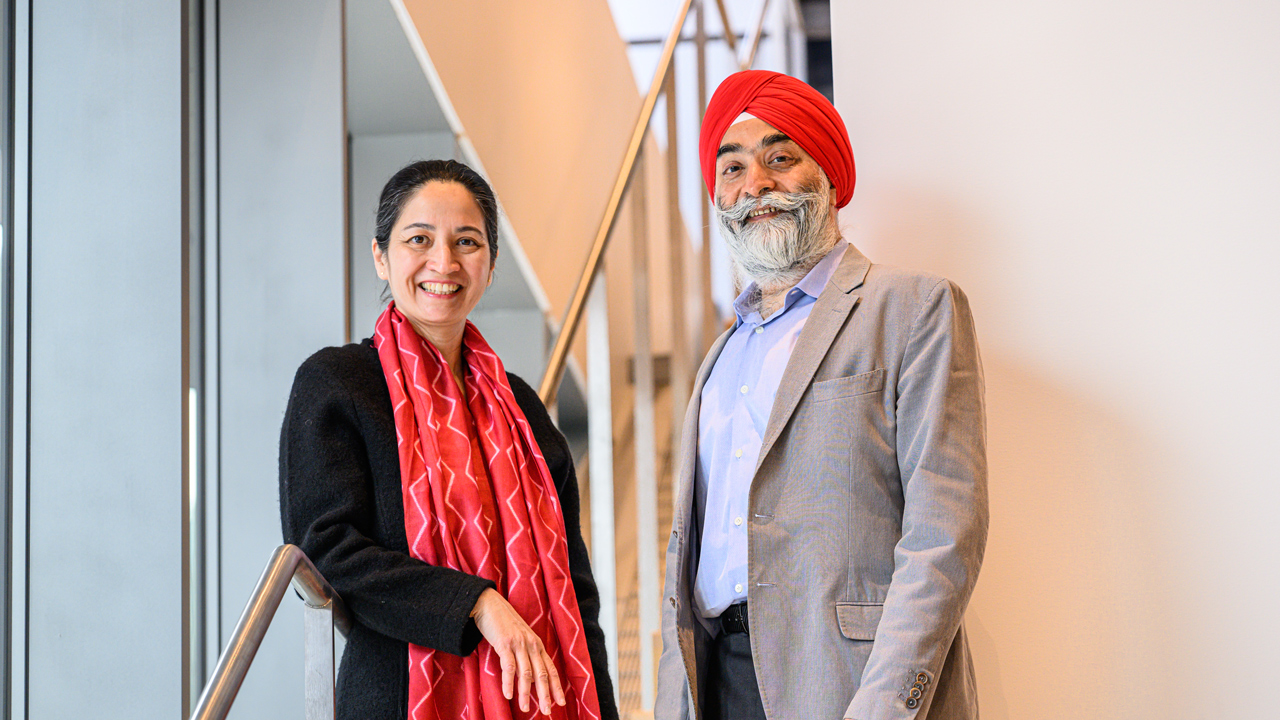
The Sawhney Family embodies the very best values of MIT: curiosity, exploration, and kindness. Amar and Deepika have raised their family to celebrate science in their everyday lives through education, work, and service. Intrigued by MIT’s openness to new ideas, innovation, and even criticism, Amar was motivated to engage with the Institute. The “robust cross-functional collaboration between departments and local medical schools combined with an entrepreneurial zest”—all attributes he holds dear—made it easy to cultivate diverse relationships within the MIT community. Now, as parents of a current MIT student, the Sawhneys feel right at home.
Connecting youth and STEM (science, technology, engineering, math) is a reoccurring theme for the Sawhneys. As a boy in India and a son of parents with science backgrounds, Amar read the magazine Science Today religiously. Its last page contained a small circuit that could be assembled, and he made several of those circuits in high school. This activity sparked Amar’s interest in science, and he eventually decided to pursue a degree in chemical engineering at the Indian Institute of Technology at New Delhi.
Amar came to the United States for graduate studies at the University of Texas at Austin and completed his master’s degree and doctorate in chemical engineering. Under the guidance of a faculty advisor, Amar developed the first materials that could be polymerized in contact with living tissue, without harming a single living cell. This seminal work has led to the creation of many advances, including 3D printing of tissues, surgical sealants, spacers, and drug delivery.
During his doctoral studies, Amar began amassing patents, which led to the creation of two companies. He later went on to found several others including Ocular Therapeutix, which develops sealants as well as drug delivery systems for ophthalmology. Amar now focuses his time on Incept, a medical device incubator he co-founded. “From my first taste of entrepreneurship, I learned so much and was hooked for life,” he says. “I’ve never looked back or wanted to work for anyone else.”
Deepika echoes the same passion for science and exploration, noting that it was easy to incorporate science into their daily life. She and Amar encouraged the children to ask questions—“Why?” “What is this?” “What does it do?”—and sought answers though museum visits, conversations, and play, engaging with STEM and making it fun. The Sawhneys recall visiting the MIT Museum, and how the children were mesmerized by Arthur Ganson’s kinetic sculptures, Kismet the robot, and the funny MIT hacks.
Today they celebrate making as a family. “All of us are engaged in some form of the creative process that involves science,” says Deepika. Their children through the study of engineering, self-motivated projects, community involvement, and robotics; Amar through his work in developing medical devices for unmet medical needs; and Deepika through her work with children, such as setting up science fairs and science bowl teams in school.
Volunteering in both an urban and a suburban public school setting has allowed Deepika to “cross pollinate” some of the best ideas. She meets students, faculty, and administrators who problem-solve in their particular context to get the best out of public education. As a member of the Lexington School Committee since 2018, she is a champion of STEM and project-based middle-school educational programs, such as the Science Bowl, Science Olympiad, and Science Fair, and is a FIRST® LEGO® League coach.
These interests in youth and science led the Sawhneys to support educational and public programs at the MIT Museum. A long-standing member of the MIT Museum Advisory Board, Amar has seen the plans for the museum’s move to its new home in Kendall Square progress over several years, led by John Durant. “I absolutely love how John has unfolded this vision in terms of space, exhibits, and experiences in the new museum. Advances in artificial intelligence, CRISPR modifications to genes, robotics, and the future of work, are examples of topics that we must discuss. And I’m glad that, under John’s leadership, we will now have a grand place to do so.”
The Sawhneys find the work that the MIT Museum has done, and is planning to do in the future, to be especially exciting. Amar notes the museum’s unique efforts to allow “science to be demystified, made cool, and achievable, while communicating the role that MIT has played and continues to play in this arena.” He and Deepika are motivated to support MIT Museum programming that is consumed by eager minds and that hopefully will have a lasting and scalable impact for the future.
“I think that right now is one of the most seminal and impactful times in the history of the MIT Museum,” says Amar. “Due to these improvements, we are going to get so many new visitors. I would tell others, ‘Get involved now, as things are being shaped!’”
